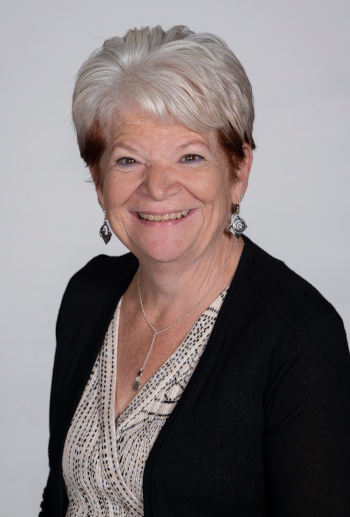- Becky Salato
The Real-World Impact of CTE Education

In June, just a week after celebrating their high school graduation, four friends were out riding dirt bikes in Morgan Valley, a remote part of the county, when two of them came around opposite ends of a blind corner and collided.
Logan was thrown from his bike, landing on his back on a pile of rocks and knocked unconscious. Zach’s foot was sliced open.
As unlucky as this was, there was an element of good fortune. A third friend, Brady, had completed the emergency medical services class at Lower Lake High School, part of the Public Safety Career and Technical Education, or CTE, pathway.
Brady’s training kicked in and he immediately began assessing how much danger his friends were in.
He ran toward Logan, his best friend since childhood, while calling the fire chief, Willie Sapeta, to request that dispatch send emergency medical responders.
Most kids would call 911 — and that would be the right move — but since Logan’s dad was the fire chief (and Brady’s godfather), he called him directly.
Chief Sapeta and his wife, Rachelle, had just finished dinner when the call came in. As soon as Brady said there’d been an accident, Chief Sapeta and Rachelle jumped into action. The chief called for two air ambulances and other emergency support.
Their son, Logan, was well known to many emergency responders because he was an Explorer, a junior fire fighter who accompanies fire fighters on calls to do “mop up” and other support functions.
Once those calls were made, the chief said he threw the phone to Rachelle to keep talking to Brady, and he grabbed his keys so they could meet the emergency vehicles on scene.
In the moments after the accident, Logan was unconscious and had snoring respirations, meaning his tongue could block his airway. Brady moved Logan’s jaw to open the airway and then held Logan in a “c-spine,” a position that restricted his mobility to prevent further injury.
Brady instructed the other uninjured friend, Michael, to check on Zach’s foot. While Zach’s injury was serious, it didn’t appear life threatening, so Brady asked Michael to hold Logan still while he performed a spinal step-up check. As Brady ran his fingers along Logan’s spine, he felt a bump that could indicate a spinal injury.
Logan began to regain consciousness, but Michael kept him still and didn’t let him stand. According to the doctors who cared for Logan later, this prevented Logan from becoming a paraplegic.
Once emergency responders arrived on the scene, Logan and Zach were evacuated by medical helicopter: Logan to UC Davis Medical Center and Zach to a hospital in Santa Rosa before also being transported to UC Davis. Thankfully, both boys are expected to make a full recovery.
Chief Sapeta has been a firefighter for 45 years, so he has seen plenty of serious injuries, but he said he now has a whole new appreciation for what people go through when this kind of accident involves your loved one, especially your child.
As he talked about how thankful he was that Brady kept his head and used his training, we got to talking about the partnership between Konocti Unified School District and the Lake County Fire District.
Chief Sapeta has been supporting the school district since long before I arrived. For 20 years, he provided Carlé students with hazardous material training, so they could be certified by the California Specialized Training Institute and work in the field. After that, we began the emergency services training.
A big part of why the emergency medical training provided through Lower Lake High School is so successful is because Fire Battalion Chief Marc Hill works with CTE teacher Miriam Garner to teach many of the classes, imparting skills he has acquired during his many years of experience as a firefighter.
Chief Sapeta is a huge advocate for the kind of hands-on training that provides students with a way to support themselves and give back to whatever community they’re a part of–and becoming a certified emergency medical technician, or EMT, opens a lot of doors.
He mentioned that in addition to working on a fire crew or ambulance, EMTs can work in hospitals and other medical settings, as well as on location where accidents are more likely to happen like Hollywood sets where stuntmen are working, and oil rigs where the nearest emergency room isn’t anywhere close. Chief Sapeta has several Lower Lake High School graduates working for him at the fire department.
CTE is a great example of how education is continually evolving toward more experiential learning. Konocti Unified is expanding in this direction, and so are many other districts.
Traditional classroom learning remains valuable, of course, but as our world keeps changing, so do the needs of our students. Providing students with real-world scenarios and allowing them to test their skills outside the classroom is incredibly valuable.
The story of what happened to Logan and Zach illustrates this. This accident could have had a very different outcome. If the boys didn’t have such deep friendships (reinforced by their time together in school), if they didn’t have this emergency response training (made possible through community partnerships), things could have gone very differently. I am so grateful for a community that embraces our students and helps them grow and learn, and I am so happy this story had a happy ending.
As a postscript, after having completed their emergency medical training at Lower Lake High School, Brady and Logan plan to pursue careers in public safety, Brady as a firefighter here in Lake County and Logan as a heavy machine operator for Cal Fire.
In recent weeks, Brady received notice that he passed the national emergency medical technician certification exam, and he is now in the process of obtaining the driver’s license endorsement that will allow him to drive an ambulance while he continues his training.
Everyone involved agrees that even if you don’t plan to go into public safety as a career, it’s a great idea to take a first aid/CPR class.
As Brady said, “You just never know what’s going to happen.”
Becky Salato is superintendent of the Konocti Unified School District.





 How to resolve AdBlock issue?
How to resolve AdBlock issue? 



